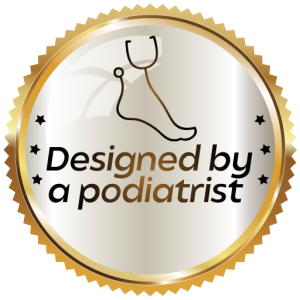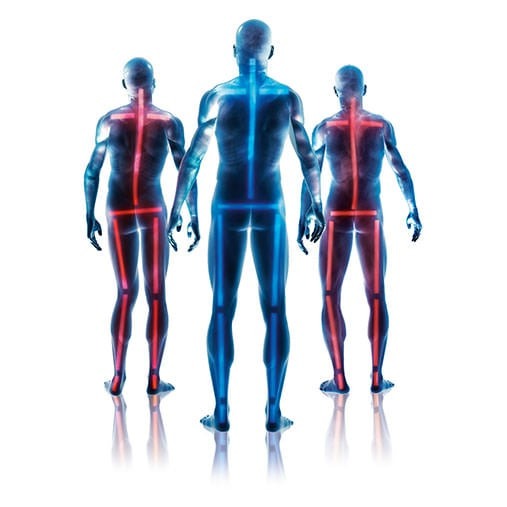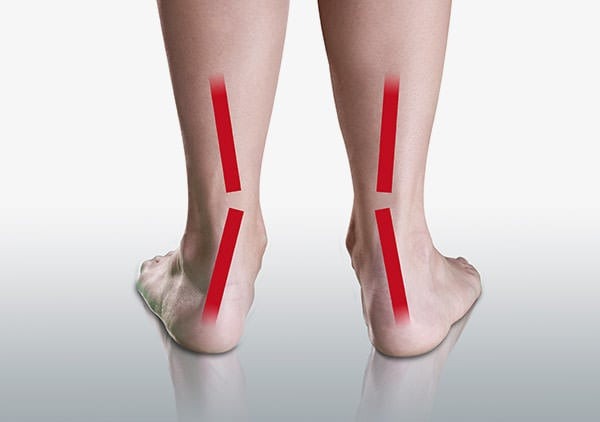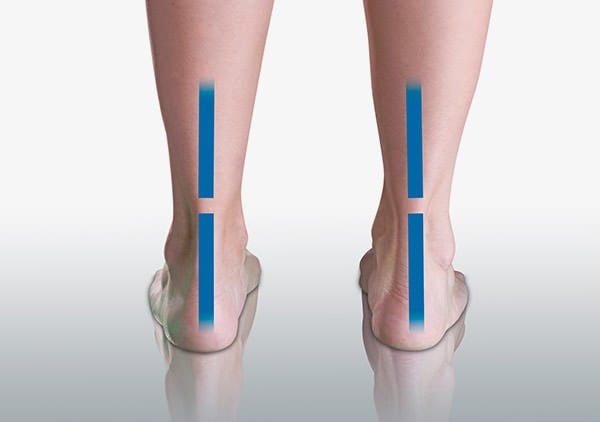



The human foot is a complex structure of utmost functional importance in supporting the body and facilitating movement. It is essential to directly recognize common foot types to choose appropriate preventive and therapeutic interventions for each type individually, to maintain optimal foot function and reduce the risk of injuries. In this article, we discuss common foot types in detail and how to maintain foot health.
Over 75% of the population suffers from misalignment such as over pronation or excessive supination. The effect can be felt throughout the body, wether in muscles and joint pain or through more serious injuries.

When the foot rolls inward excessively, distributing weight unevenly. One of the most common foot misalignments.
Types of foot are primarily classified based on the height and shape of the medial longitudinal arch, which plays a crucial role in pressure distribution and shock absorption during walking and running. The main classifications include:
This type is considered the most common foot type. It is characterized by a medium-height arch that provides an effective balance between shock absorption and support, leading to even pressure distribution across the foot.
The flat foot, or Pes Planus, often accompanied by overpronation, is characterized by a low or absent longitudinal arch. This leads to an increased contact area with the ground and an inward tilting of the foot and ankle during the support phase of walking. This can increase stress on the medial structures of the foot and ankle and may be associated with lower limb pain.
It is recommended to use Control Insoles that provide the necessary support and control for flat feet.
The high arch foot, or Pes Cavus, often accompanied by supination or underpronation, is characterized by a noticeably high longitudinal arch. This reduces the contact area with the ground and leads to weight concentration on the outside of the foot. This foot type is often more rigid and less able to absorb shock, which may increase the risk of stress injuries and sprains.

When the foot rolls inward excessively, distributing weight unevenly. One of the most common foot misalignments.
In addition to arch structure, variations in common foot shapes, determined by the relative lengths of the toes, contribute to determining the appropriate shoe size and shape. Some foot shapes may require wider space in the shoe’s forefoot to avoid toe compression and problems like toe deformities.
A thorough biomechanical assessment of the foot and ankle, conducted by a qualified specialist, is essential to identify any functional imbalances and determine the need for supportive interventions. This assessment can clarify whether using generally designed shoe insoles in Dubai is sufficient, or if customized solutions are needed.
In cases of significant biomechanical imbalances or persistent symptoms associated with certain common foot types, custom-designed foot orthotics in Dubai may be necessary. These medical devices aim to achieve the following:

When the foot leans to the outside. Weight is distributed along the outside. Also known as under-pronation, over supination reduces the body's natural shock absorbing capability.
Studies indicate that the neutral arch foot is the most prevalent. This foot type is characterized by a good ability to adapt to various surfaces and distribute pressure effectively. However, this type of foot does not necessarily mean the absence of problems, as factors such as inappropriate footwear or increased physical activity can lead to symptoms.
To maintain foot health and optimal function regardless of the type, the following principles are recommended:

Foot and ankle maintain a straight line. Weight is distributed evenly across the foot and heel.
Knowing common foot types and their biomechanical impacts is fundamental for making optimal decisions regarding foot care, shoe selection, and supportive interventions when needed. Through accurate assessment and consideration of solutions like shoe insoles in Dubai or foot orthotics in Dubai, foot function can be improved, and the risk of injuries and symptoms associated with structural imbalances can be reduced.
Specialists typically conduct a visual examination of the foot during standing and walking. They may use tools such as a foot scanner or pressure measurement platforms to quantitatively and accurately assess pressure distribution and arch shape, in addition to taking the patient’s medical history.
Yes, the structure of the foot and its arch can be affected by factors such as aging, weight gain, pregnancy, injuries, and certain medical conditions. This may lead to changes in foot type or an exacerbation of some biomechanical problems.
Biomechanical imbalances in the foot, such as overpronation in flat feet or excessive rigidity in high-arched feet, can affect the alignment of the entire lower limbs. This may contribute to the onset of pain in the knee, hip, or even the lower back due to altered patterns of force distribution and movement.
lex structure of utmost functional importance in supporting the body and facilitating movement. It is essential to directly recognize common foot types to choose appropriate preventive and therapeutic interventions for each type individually, to maintain optimal foot function and reduce the risk of injuries. In this article, we discuss common foot types in detail and how to maintain foot health.

